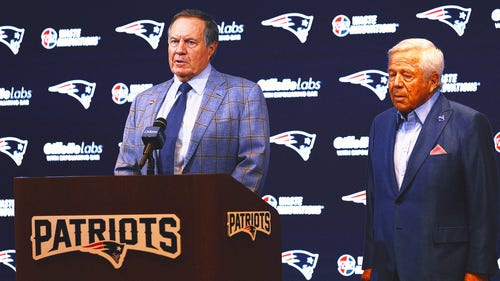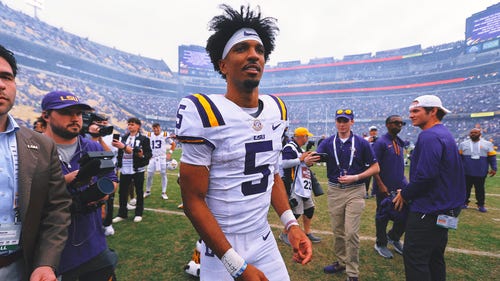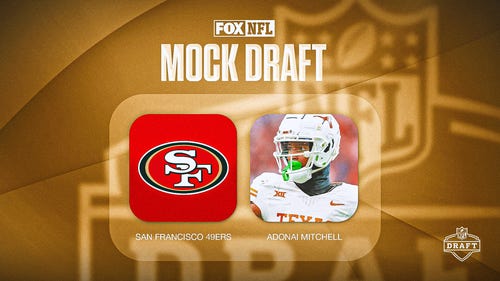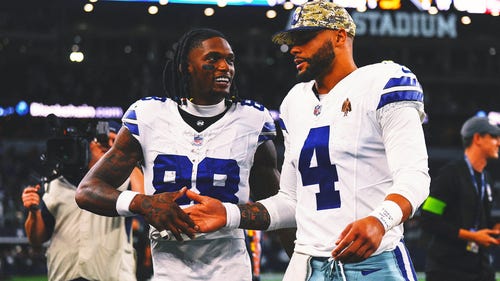
Week 9's biggest calls
It was a Sunday that started out calmly, but ended with a bang. Not much controversy took place in Week 9, but the late games sure provided a lot of fireworks. There were fouls, there were overtimes, there were teams without challenges or timeouts, but in the end, it was another week of exciting NFL football.
However, I start the week's biggest calls with a serious injury that nobody likes to see.
1. Indianapolis at Philadelphia
THE SITUATION: Indianapolis trailed 16-7 with the ball and 2:23 left in the second quarter.
THE PLAY: Colts quarterback Peyton Manning dropped back to pass on a second-and-6 from the Indianapolis 40-yard line. Manning's attempt to Austin Collie was incomplete, but Collie was hit hard on the play by three Eagles players — Quintin Mikell, Asante Samuel and Kurt Coleman. Mikell was penalized 15 yards for unnecessary roughness.
MY TAKE: There will be a lot of conversation about this play during the course of the week. While Mikell was originally cited as the player who made the helmet-to-helmet contact, it was actually Coleman who hit Collie on the side of his head with his facemask.
I can clearly understand why a flag was thrown because the officials have been reminded to call a foul even if they are in doubt on plays such as this. The problem is, I just don't see how this contact could have been avoided.
There are a couple of things to think about. First, Collie was defenseless. You only become a runner after the officials rule that you have completed a catch. On top of that, the rule changed this year to give receivers extra protection after making the catch and becoming a runner. The judgment for the official is whether the receiver had controlled the ball long enough to assume a position to protect himself.
In slow motion, you would say Collie had that time. In real time, however, I don't feel he did. I don't feel that Coleman lowered his head and made the type of contact that would necessitate a fine. The book does say that you can't use your facemask when hitting a defenseless receiver. But to me, when Collie was first hit by Samuel, he then ricocheted into the path of Coleman.
At the end of the day, I thnk the league should support the call of unnecessary roughness, but not fine Coleman. I won't be surprised, however, if they do fine him.
2. San Diego at Houston
THE SITUATION: Houston led 17-14 with 23 seconds left in the second quarter, with the ball third-and-3 at the San Diego 3-yard line.
THE PLAY: Texans quarterback Matt Schaub completed a 3-yard pass to running back Arian Foster for the touchdown. During a booth review, the replay assistant challenged that it was an incomplete pass, and the play was reversed. On fourth-and-3, the Texans were forced to settle for a field goal and a 20-14 lead.
MY TAKE: The league needs to go back to the drawing board to figure out what is a catch when you are going to the ground. This play was reversed to an incomplete pass and I thought it should have stayed a touchdown. This is an example of the confusion surrounding this area of the game.
To me, this was similar to the two-point conversion in the Super Bowl last season and not the Calvin Johnson play from Detroit's first game this season. Foster was on his way to the ground and reached out with the ball in his right hand to make sure that he had broken the plane. This is the “second act” that the league has referred to in the past.
If the receiver is going to the ground but reaches out with the ball in an attempt to gain more yardage, he is deemed to have completed the catch and the ruling then becomes either a touchdown — if the end zone is involved — or a catch and down-by-contact in the field of play provided he had been touched by an opponent. If not, it would be catch and fumble.
This is what happened last year in the Super Bowl when Lance Moore reached out to break the plane. This is not what happened in the Calvin Johnson play earlier this season when the ball hit the ground and came loose as part of the process of completing the catch.
In my opinion, the ruling of touchdown should not have been reversed and this call seemed to change the complexion of the game.
3. Kansas City at Oakland
THE SITUATION: Kansas City trailed Oakland 17-13 with 8:52 left in the game and was punting on fourth-and-10 from its 15-yard line.
THE PLAY: Ryan Succop punted the ball 53 yards to the Oakland 32-yard line. Nick Miller fumbled on the return and it was recovered by the Chiefs' Verran Tucker at the Oakland 30. The Raiders had no challenges left and the Chiefs scored five plays later to take a 20-17 lead.
MY TAKE: This game was a nightmare. There were 32 penalties, and Oakland was out of challenges with 14:31 left in the SECOND quarter. The officials temporarily lost track of downs and had to correct themselves after a holding penalty. No matter how you look at it, it was ugly.
The play in question added to the ugliness. Oakland was not able to challenge the ruling of a fumble at the end of this punt return. The Raiders were furious as they felt Miller was down by contact. However, when I watched all the replays, I don't feel the on-field ruling of a fumble would have been reversed. There wasn't conclusive evidence to overturn the call.
The ruling on the field was going to stand no matter which way the officials ruled. It was that close. The Raiders themselves were penalized 18 times and the lost the ability to challenge, yet they still came back to win the game in dramatic style in overtime. Incredible.
4. Indianapolis at Philadelphia
THE SITUATION: Philadelphia led 19-17 early in the fourth quarter when two back-to-back challenges were used, one by each team.
THE PLAYS: On the first play, the Eagles faced a second-and-5 from the Colts 8-yard line. Michael Vick's pass to Jason Avant went for 7 yards to the 1. Philadelphia challenged the runner-broke-the-plane ruling, and the play was upheld. On the very next play, Vick went up the middle for a touchdown.
Indianapolis challenged the runner-broke-the-plane ruling, and the play was reversed. The Eagles had the ball second-and-goal from 1-yard line. Vick scored on the next play to give Philadelphia a 26-17 lead.
MY TAKE: Not often do you see back-to-back challenges and then a third consecutive play that might have been worthy of yet another.
Philadelphia's initial challenge was correctly upheld in replay as the runner was down short of the goal line. Indianapolis' challenge on the next play resulted in the ruling being reversed from a touchdown to the ball being dead at the 6-inch line. The next play, Vick ran a quarterback sneak and was ruled to have scored after a lengthy delay.
Why the delay? Many times on a goal-line play, the runner disappears into the pile and the linesman and line judge never see the ball. They have to go in, unpile players and see where the runner is. If the ball is beyond the plane at that time, they will then signal touchdown. If not, they rule the runner short. You can't make a ruling without seeing the ball. Therefore, these delays are impossible to avoid.
5. Miami at Baltimore
THE SITUATION: Baltimore kicked off after taking a 10-7 lead on its first possession of the second quarter.
THE PLAY: Billy Cundiff kicked off 75 yards and the ball went five yards deep into the Miami end zone. Nolan Carroll muffed the catch and it was recovered by teammate Lex Hilliard, who was one yard deep in the end zone. It was ruled a touchback.
MY TAKE: Interesting play that involves a question as to whether thisa touchback or a safety.
First thing to look at is that the kicking team put the ball into the end zone by virtue of the kickoff. Carroll's muff propelled the ball toward the goal-line. If the ball had gone out into the field of play before being recovered by Hilliard, it would have been deemed a safety because Hilliard would be charged with putting the ball into the end zone.
Remember — when a runner is carrying the ball into the end zone, the ball just has to break the plane for a touchdown. When the ball is being carried out of the end zone, the entire ball must cross the plane and enter the field of play before any ruling of a safety can be considered.















































































































































